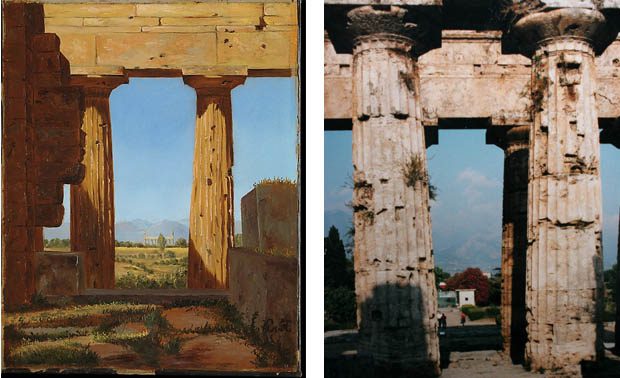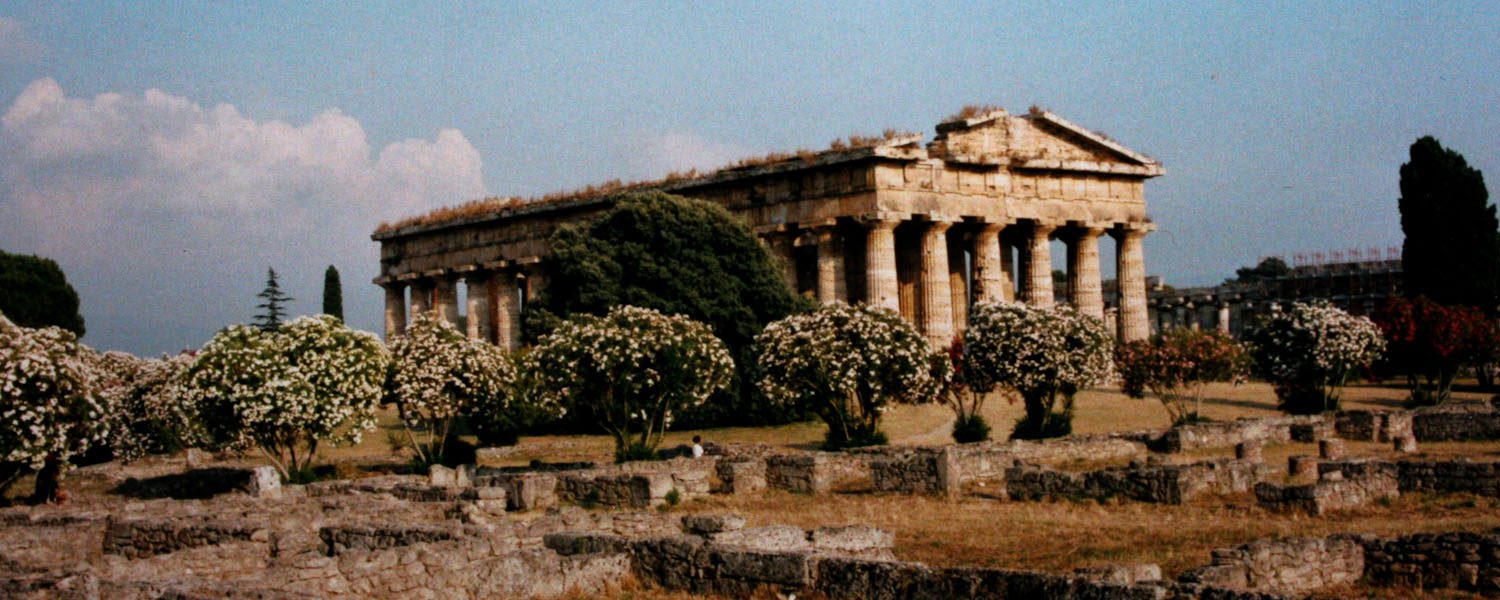The Paestum temples
Greek ruins in a sea of flowers
A once flourishing town in Magna Grecia disappeared for centuries like some Italian Angkor-Wat before it was rediscovered. Now the three Paestum temples mark a quietly charming UNESCO World Heritage site.
Booking.com
In pre-Roman times Paestum was a wealthy logistic hub, where trade goods were transferred from ship to land transportation to avoid the long and dangerous passage through the Strait of Messina. People lived in comparative luxury in a town with covered arcades, an entertainment arena, and three temples to ensure their spiritual well-being, before the town was swallowed by a swamp and taken over by malaria and mosquitoes. From the 9th to the 18th century, Paestum was all but forgotten until some road builder happened to plough right through the ruins. This led to a partial excavation in the flatlands between the mountains and the Tyrrhenian Sea.
Fascinating Surroundings
The first thing I noticed when we came to Paestum a hot summer day was not so much the three incredibly well-preserve Doric temples, dating back to the first half of the 6th century BC. They looked more or less as described and painted by traveling writers and artists in the 19th century. But I hadn’t expected to see the old ruins surrounded by sun burned grasses, crumbling foundations and flowering oleanders.

My photograph of the Columns of the Temple of Neptune at Paestum (right) beside the same view painted by Danish artist Constantin Hansen in 1838.
Both because there is a strong contrast between the arid undergrowth and the lush proliferating bushes, and because the place was more or less deserted. Apart from a few souvenir shops outside the ancient town walls there were no queues and tourist busses. We – and a population of fat lizards – had the temples to ourselves, and the flowers gave the place a tranquil beauty and serenity, I felt lucky to experience.
The Roses of Paestum
The atmosphere was precisely as described by travelers from by-gone centuries. According to HV Morton, Horat, Ovid and Martial all mentioned the flowers and especially the twice flowering roses of Paestum.
Henry Swinbourne, who was one of the first foreigners to visit Paestum (and Crotone) after it had been recovered, writes about a wild, deeply red rose with a strong fragrance, though he didn’t actually see it. And Norman Douglas thought he had found the real rose of Paestum and tried to transplant his pickled specimens to English soil. He didn’t succeed, and the roses haven’t been seen since, but oleanders make a nice if unfragrant substitute, so that Paestum has retained its spirit through the ages.


Looks much less crumbled in 1838; wonder if Hansen took some artistic liberties. In any case, Southern Italy looks ever more interesting through your articles.
Ruins in a sea of flowers with no one else around sounds perfect. I rather like Hansen’s view of the scene.
I prefer Hansen as well. His ability to capture the light is much better than my old analogue camera.
What a find! I love UNESCO sites, but haven’t heard of this one. The painting is so good that at first glance I thought it was a photo.
What a terrific post. I love reading about the plants. I have heard of the roses of Paestum. I have no idea of their scent, however. And isn’t it remarkable how much your photo and the painting are similar. Thanks again for a wonderful armchair travel experience.
What an incredible day, and love the contrast between your photo and the painting…
I was born and raised not far from there! In fact I have photos of me in the temples when it was still allowed to enter them!
I have heard a lot about Paestum but have never been there. It must be an amazing place to visit. I love your comparison of the painting and your photo!
Nice blog.. Yes Paestum is beautiful. Check out also my post on it, maybe you can get few more tips :)
https://selectitaly.com/blog/italy-travel-destinations/save-a-greek-temple-today/
The combination of the well-preserve Doric temples & few tourist makes this a great destination. Thanks for highlighting this fantastic place!
Amazing how these places, these structures survive wars and neglect – I wasn’t aware of the Paestum Temples so thank you very much Mette. Love this site for all that you teach me each week.
Good – I’ve always wanted to be a school mistress:)
Maria, why you gave only one image?
I’m not sure I can answer that:)
Beautiful…
Thanks
Sounds like a peaceful place and looks like a place to discover!
Yes, and there’s not many tourists around. At least there wasn’t when I was there.